This time last year payment by smartphone at the pump was in very early development. But by June 2013 a prototype mobile payments web-browsing service created by retail technology provider Micros Systems had been piloted and launched as MiFuel, a solution allowing drivers to pay for fuel using their mobile phones.
For the forecourt operator, MiFuel is fully integrated with any point-of-sale (pos) system, providing real-time visibility of all transactions just as if they were being processed at the counter. MiFuel supports marketing capabilities, allowing operators to show offers and promotions for fuel, food and drink to motorists as they fill their tanks.
Motorists register once and then pay for fuel purchases by accessing MiFuel on their smartphones. From inside their car, the customer logs in, indicates which pump they are using, and then fills their tank with the amount of fuel required. Once the nozzle is replaced, payment is taken through the customer’s PayPal account and an electronic receipt is delivered instantly. Using GPS, the solution also allows customers to locate a petrol station that offers the mobile pay-at-pump service.
Independent retailer Mike Garner’s Woolmer Service Station in Bordon, Hampshire, where MiFuel was initially piloted, says: "We are very excited about this new payment method. We have many drivers for whom this service is ideal. For example, our disabled customers and parents with children in the car, but it offers extra flexibility to everyone with a smartphone."
Colin Reeve, director of EAME development at Micros, says: "Micros MiFuel has been very well received. We are currently working closely with a major brand on piloting MiFuel across a selection of its sites. The original pilot sites were successfully implemented and we had fantastic feedback from the retailers and their customers."
Aside from MiFuel, Micros is continually advancing its most popular fuel retail solutions.
The latest release of Prism 2 for Back Office, which is Micros’ most popular product, includes a new product update screen, electronic shelf-edge labels and price-label system software, price profiles and rounding rules, price promotions, Sage link improvements, improved log-in procedure, and inventory health check stock checking.
"Retailers love to see improvements like these in every new release bringing even more value to their original investment," says Reeve. "Our new head office solution, Prism2 HQ, is also proving extremely popular even though it’s in pilot stage at the moment.
"This software uses the power of Microsoft Dynamics NAV to offer retailers faster and far more powerful functionality than ever before with full integration into our back-office product, enabling head offices to flawlessly interact with their estate giving complete control to the retailer."
Full potential
Despite all the technological advancements, Reeve says a lot of forecourt retailers still aren’t using their systems to their full potential. To address this, Micros is holding a series of product workshops, forums and user groups over the coming months, in addition to its well-established Profit Clinics, to provide retailers with tips and advice for using technology to make more profit. "We want our customers to make the most of their systems because we know that our software has the potential to make a huge difference to margins and therefore profits the more profitable our customers’ businesses the better," says Reeve.
"We advise retailers to take full advantage of the software at their disposal. Our systems have numerous features designed to make retailers more profit such as inventory health check reports, ’Golden Lines’ etc. We appreciate that retailers are often very busy, which is why we offer e-learning packages and helpful user guides on our website. These are designed to quickly point the retailer in the right direction towards using their system to its full potential."
Paul Cooper, business development manager for systems at Tokheim, says that retailers are using their pos systems to varying degrees. "Some sites use it purely as an electronic cash box with only pump control and basic bar code scanning, while others with probably a higher business turnover use the systems to their fullest. However, most don’t realise the capabilities of the Tokheim FuelPOS.
"Independent dealer and dealer group businesses now demand a higher level of controls on site, at head office and a greater emphasis on remote reporting and site alerts when the site’s owner is away from the sharp end of the day-to-day business. Margin improvement and operating cost reductions are now paramount in the retailer’s objective to deliver a strong return on investments."
Tokheim’s FuelPOS can control either one site or a group of sites. "On-site controls are enhanced by the interface to all makes of dispenser along with major oil company card terminals," says Cooper. "Integrated credit and fuel card schemes have also been developed to allow a single system to operate card transactions without the extra clutter and ’finger troubles’ that will occur when using a third-party card terminal."
Recent upgrades to FuelPOS include a direct link from the pos to Fairbanks. This removes the need to install an iBank terminal and reduces the overall running cost of the site’s wet-stock controls. A major function of FuelPOS is also to integrate with the latest pay-at-pump technology offered by Tokheim’s Crypto VGA outdoor payment terminal.
"Outdoor payment is now recognised as one of the main investments that a site can make to reduce operating costs," says Cooper. "By using Crypto VGA, the site is able to operate off-peak trading hours in unmanned mode. This allows the site to sell fuel at full (or even increased) margin while saving on operator wage costs."
Another benefit of FuelPOS is the option to interface to CCTV security systems. The Tokheim Eye system allows site owners to search by transaction or drive-off events. It can recognise customers and their previous transactions and prompt cashiers to recommend store promotions to regular customers based on their previous buying patterns.
Other retail technology developments from Tokheim include the Konnect back office system. "Konnect offers the traditional way of controlling sites’ stocks and margins but via an internet cloud," explains Cooper. "Konnect allows a single or group of sites to be operated from any internet connected device. It could be that you are on site at a traditional desktop PC, on a train with your laptop, or cruising the Caribbean with your iPad or other tablet device; Konnect will give you access from anywhere that you are connected to the web.
"Head office controls are simplified by Konnect," adds Cooper. "Reports and controls are available by site, group of sites by location or as a full report for the whole business. All data is securely stored in the cloud, removing any disasters such as computer failure or damage on site. The added extra advantage is that Konnect is always operating on the most up-to-date software version so no more downloads and upgrade disks to install."
Partnership approach
Not all pump manufacturers have developed their own epos systems. Wayne has decided to partner with a number of the UK’s epos providers rather than put another solution on the market. Soren Powell-Holse, sales manager for UK & Eire at Wayne, says: "Using our flexible Fusion forecourt system platform we have developed integration with a number of the leading epos systems including Micros. This approach allows retailers to keep the epos solution they know and like while at the same time opening up a number of new possibilities on their forecourt, like pump media.
"Fusion is designed to be modular and flexible and can even work as a traditional console for sites that don’t require a full epos system. The Fusion architecture provides retailers with a future-proof solution as the architecture works a little like an iPhone when extra functionality is added with additional apps. A very exciting example is the FusionATG app, which means that Fusion can double as both forecourt controller and tank gauge with tank probes communicating directly to the Fusion forecourt system."
Meanwhile, payment and loyalty solutions provider HTEC has broadened its range of pos, back-office and head-office solutions following parent company Universe Group’s acquisition of Indigo Retail in June this year. Former Indigo Retail managing director, Billy Tank, who has become business development director at HTEC, stresses: "First and foremost both HTEC and former Indigo customers are assured that all solutions are to be supported and continued to be developed this is central to the company’s philosophy of creating a customer charter placing retailer choice and service at the top of the agenda."
Driving forward the change, HTEC has appointed two design agencies to create new user interfaces for its pos, back office and head office products, reveals Tank. "The design is based on three stakeholders the retailer, the pos operator and the consumer with the goal of creating an exceptional user experience for each. Customer epos user groups have provided feedback and input into these designs, and new user interfaces are to be implemented by the end of the year on the backbone of the core engines. These designs are to include the ability to operate specific screens for fuel, convenience, café or restaurants with all user screens feeding off the same core product implementation.
"Creating this new, fresh, innovative look is part of the epos solution," adds Tank. "Much time, resource and investment has already been committed to converting code conversion to Microsoft’s latest products. HTEC wraps a range of seamless solutions around the epos system, including integrated back office, head office, web reporting, electronic funds transfer (EFT) software, EFT processing, outdoor payment terminal (OPT), loyalty and automatic number plate recognition (ANPR)."
Two existing epos features underline the innovation at HTEC the pos provides camera images linked directly to items scanned in the basket and ANPR reduces drive-offs with links to a central database of blacklisted number plates. In addition, wireless hand-held terminal links add to the real-time functionality of the solutions, and the epos can integrate to an affordable OPT providing all fuel retailers with the option of fast lanes or going unmanned overnight to extend opening hours, for example.
"It is evident that combining the acquired Indigo solutions to the HTEC portfolio has created a powerful family of products for retailers backed by a superb UK-wide support infrastructure," says Tank. "Central to the company’s success is the versatility of the epos system, providing core data for retailers, allowing them to drive their business forward with timely and accurate information. Web reporting will allow access to this data anywhere and at any time."
GB Oils chooses htec gempay
GB Oils has strengthened its dealer support package with the roll out of the HTEC GemPAY payment terminal solution for its new card platform.
The technology enables dealers to process transactions up to 10 times faster while providing increased end-user security in line with the latest PCI DSS compliance legislation, which was introduced to reduce the risk of fraud by improving controls relating to the handling of card holder data.
GB Oils is using Suresite to manage the new card platform as the company embarks upon the roll out across a 1,200-strong dealer network. The platform provides GB Oils’ dealers with direct access to first-generation technology using one of the most advanced, flexible and secure card processing systems in the industry.
Paul Muncey, head of retail sales at GB Oils, says: "HTEC is an industry expert in this field and its GemPAY system is designed to meet payment processing requirements of credit, debit and fuel cards within the forecourt sector.
"It uses a proven hardware platform and the very latest advances in payment terminal technologies that are compatible with most point-of-sale systems. The equipment we have selected has proven reliability and is robust and user friendly."
GB Oils has used its critical mass to ensure that the equipment leasing option for dealers is as competitive as any in the industry. The new system accepts the Allstar EMV card along with both the Shell and Gulf account cards.
"Acceptance of the industry’s leading fuel cards is important to our dealers and we are working with BP to look to reintroduce the acceptance of the BP fuel cards as soon as possible," adds Muncey.
"It’s altogether a better package for the forecourt and for our dealers. The new system is internet-based to process transactions faster and eliminate queues at the checkout and, whereas transaction data was previously downloaded overnight, it’s now done in real time which improves security."



















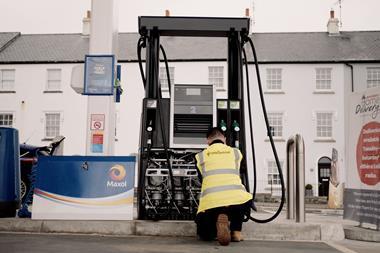

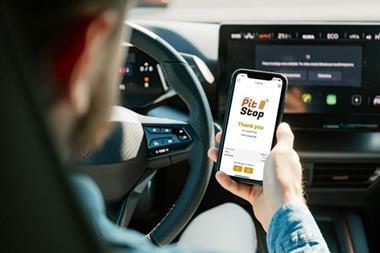
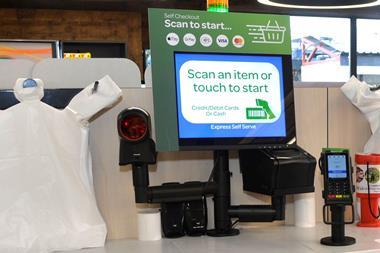
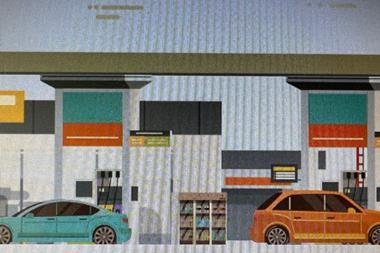
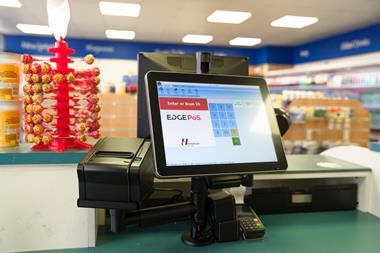




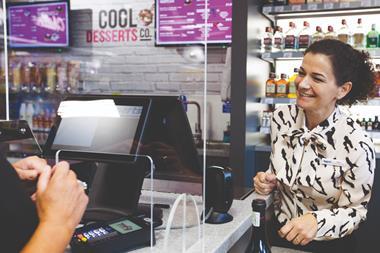
No comments yet